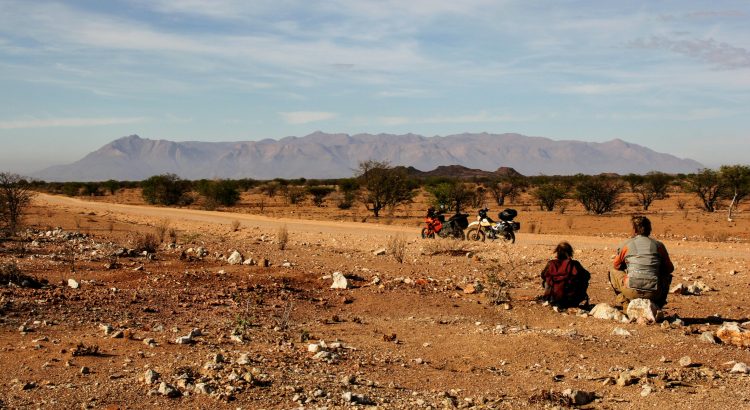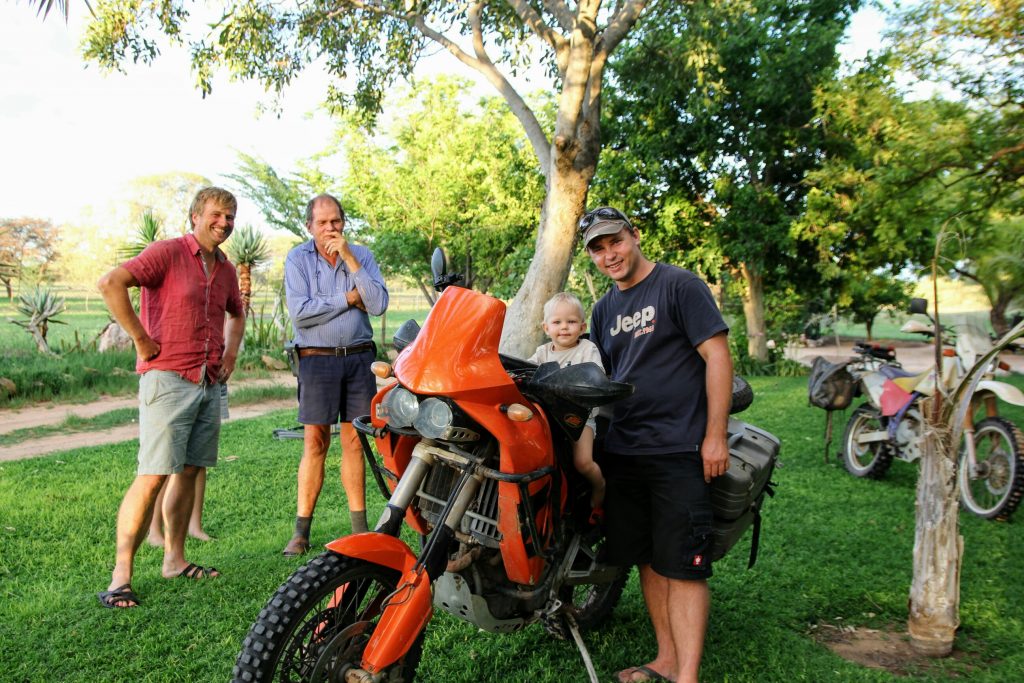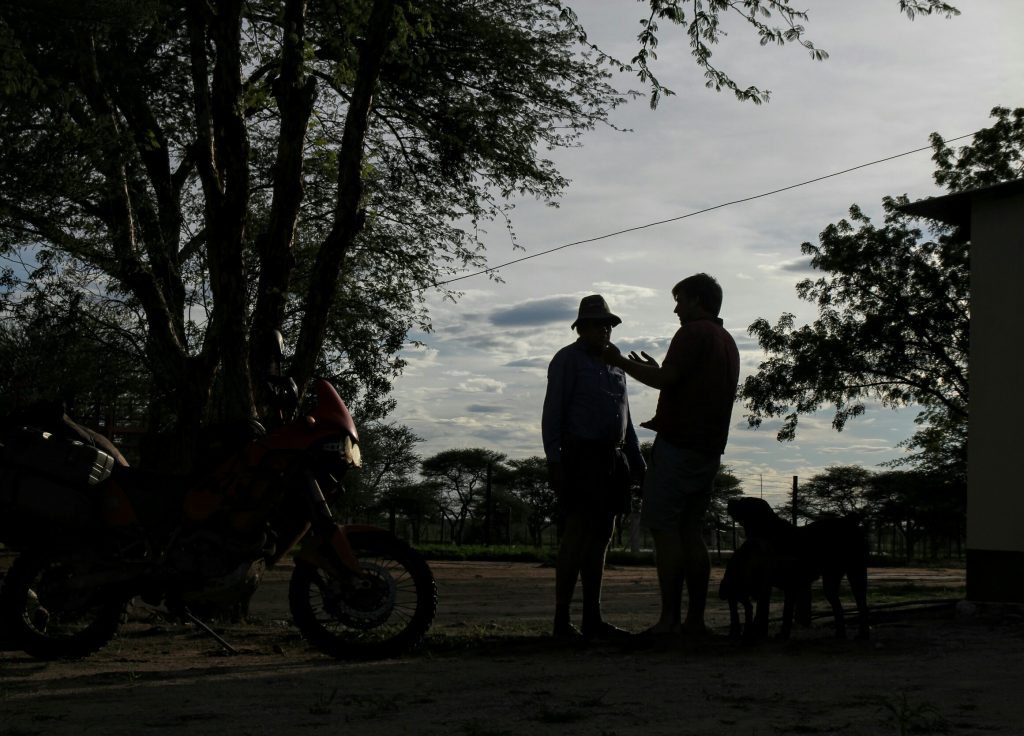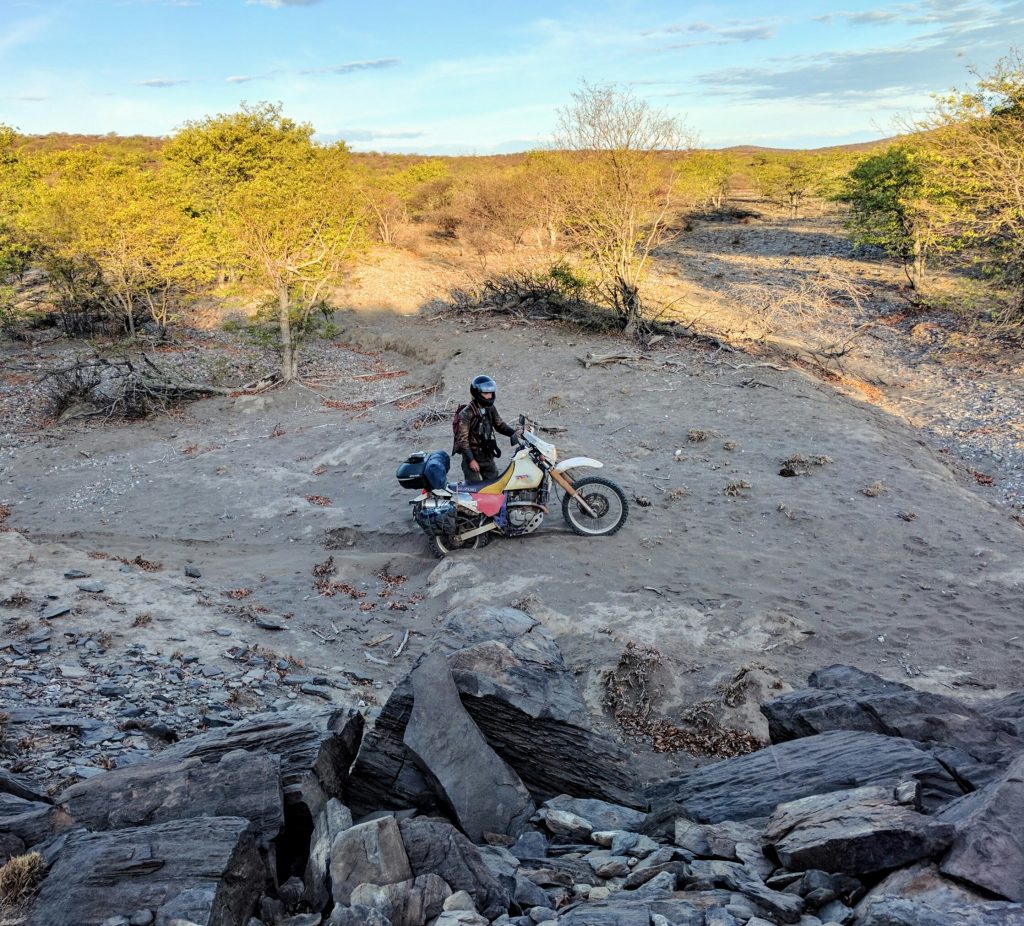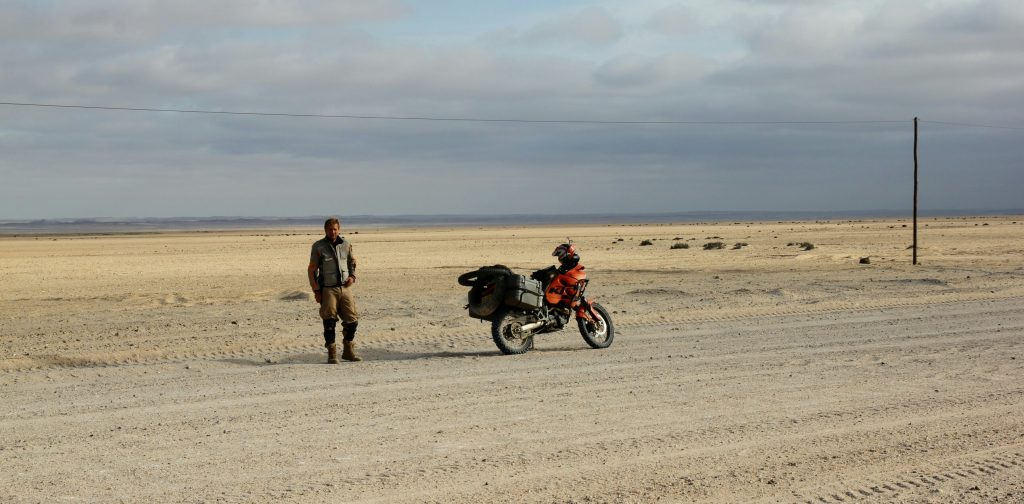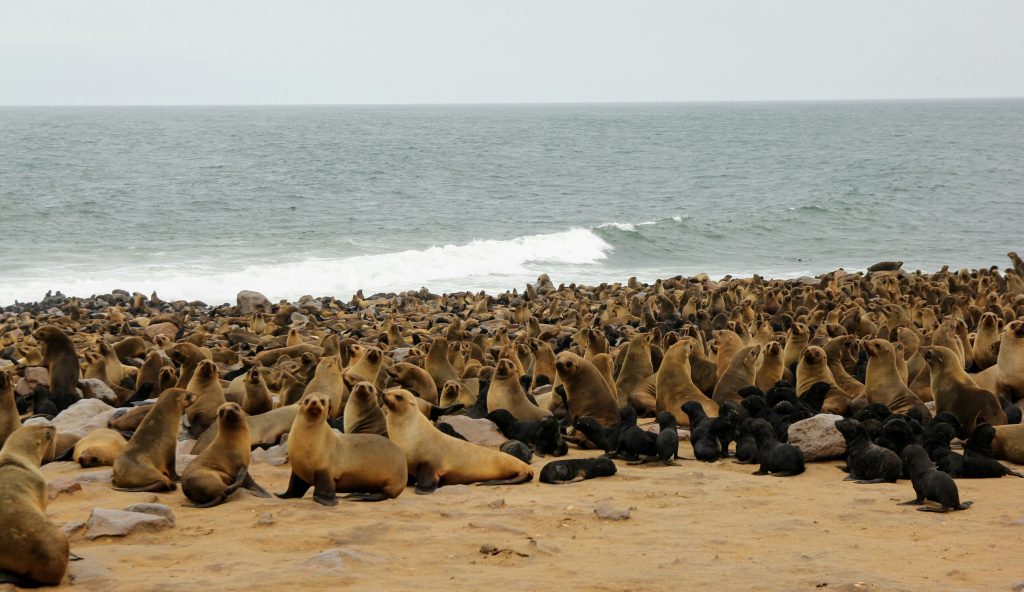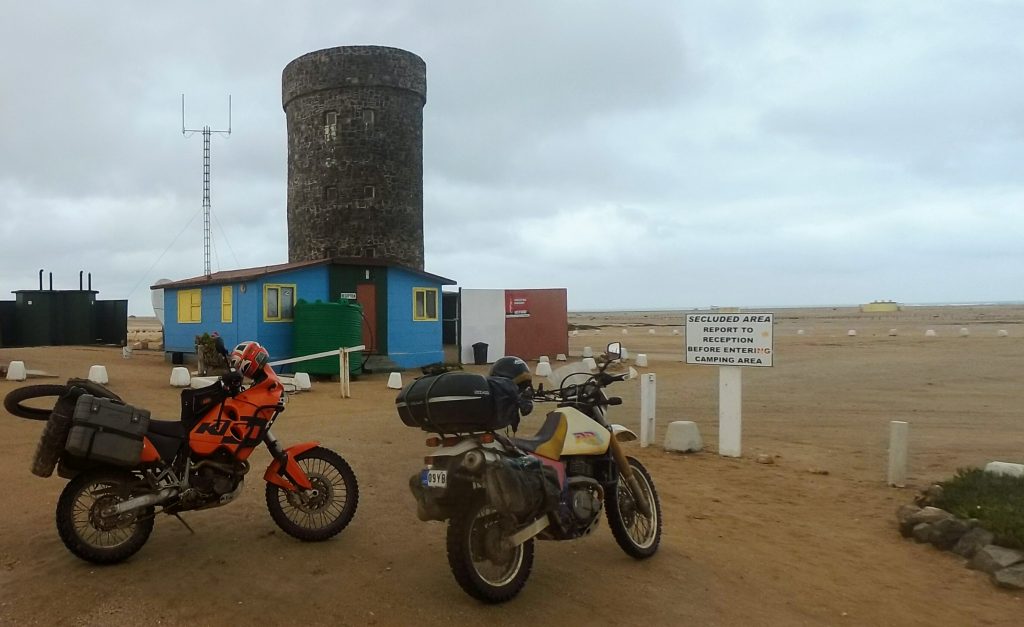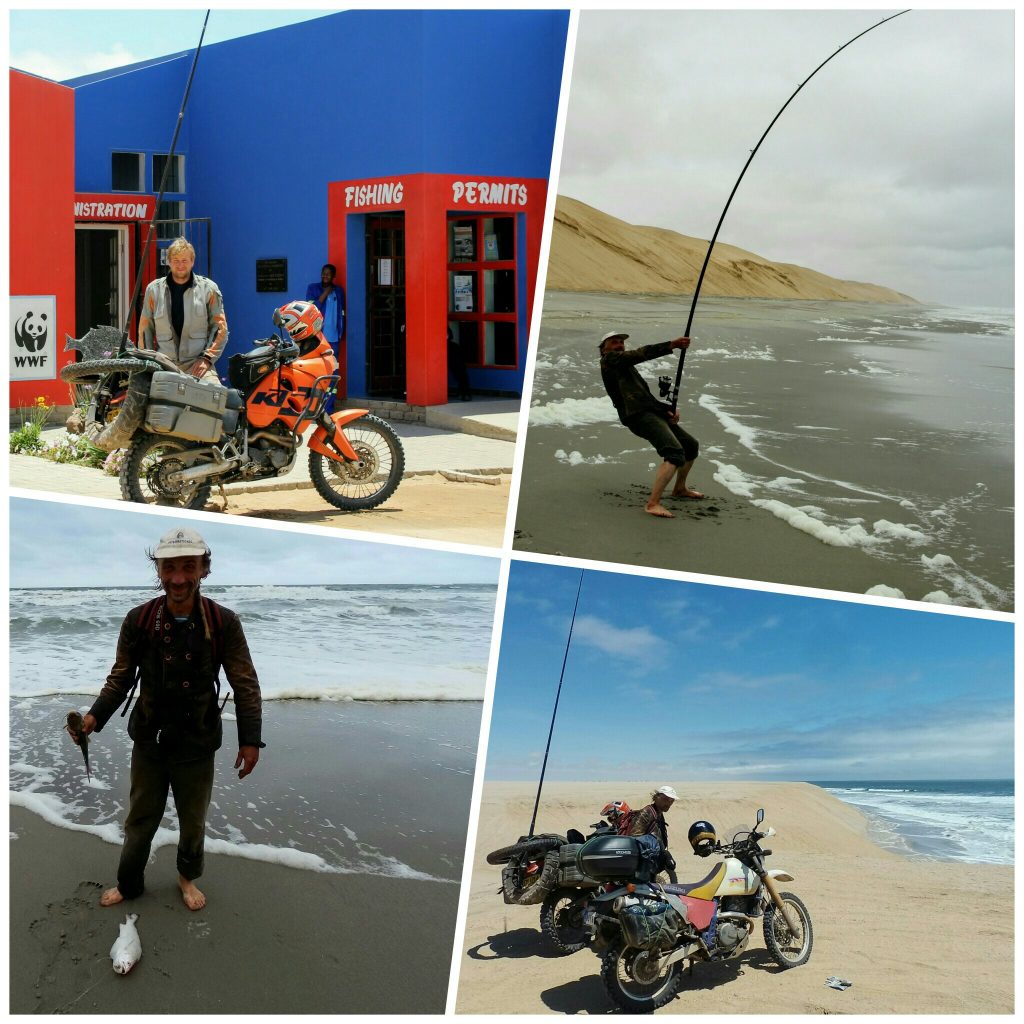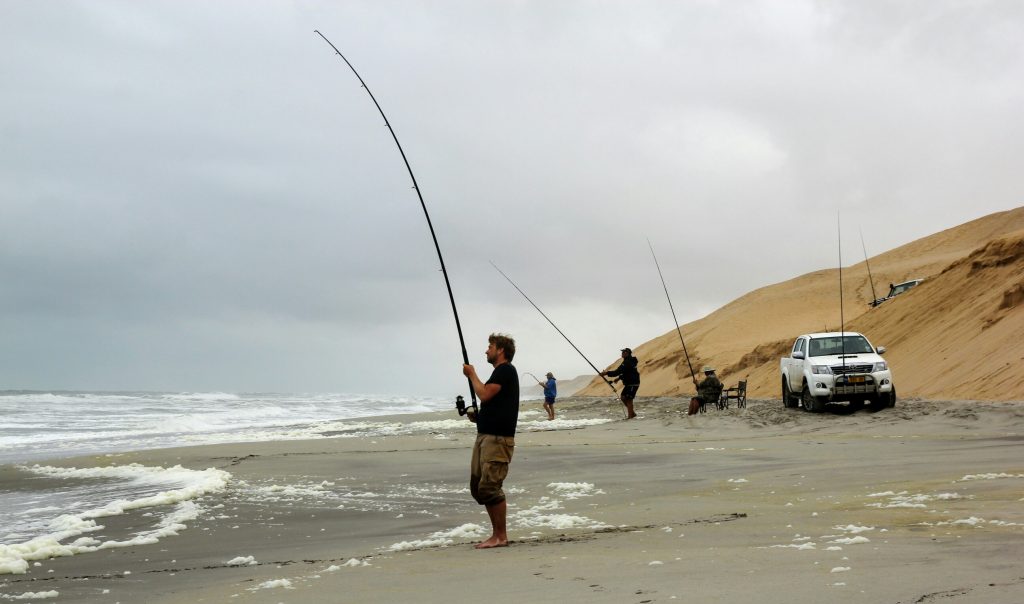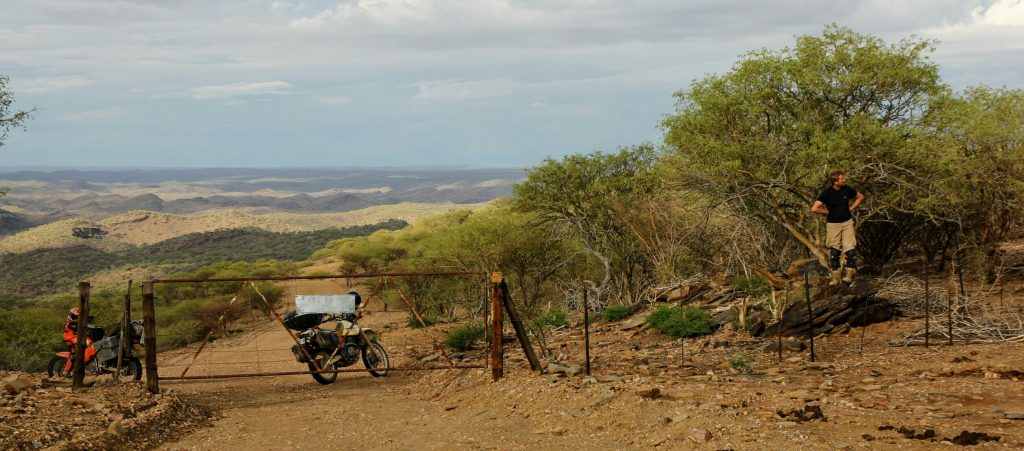On the second attempt we succeed in crossing the Namibian border and have agreed to stop a few km outside the border town. While in Angola it was at times hard to find a bar-shed or a cafe-shed, now the problem was opposite. In every village of 10 sheds, 8 of those sheds were bars with cute names.
The first impression couldn’t have been more wrong. 100 km into the country the bars disappear and are replaced by long straight roads with perfect tarmac, bordered by endless fences. Namibia could be mistaken for an African Bundesland or a German version of Arizona. The Ordnung is everywhere. Having been through the chaos of Nigeria, Congo and the places inbetween, the western-like orderliness of everything in Namibia was unexpected.
Namibia is a new country, it gained independence from South-Africa in 1990 after 20 years of the same war, which had been going in Angola between SA, the US and the Russians. While statistically, only 1% of the population is white (German), they are more visible. Walk into any garage, the lead mechanic is a German dude, with his wife or daughter running the shop and books. The same in shops, farms and all other businesses.
I had planned to visit Dirk – a mathematician friend from the olden days of Deloitte. Dirk was from Namibia and constantly raving about the place, inviting everyone to visit once he goes back. Not sure if he expected this, but I was taking him up on the offer now 8 years later.
He was holidaying at his parents in-laws farm up north near Grootfontain, 40km inland from the nearest tarmac road. There are 3 rules of motorcycle travelling in Africa: 1) no riding and drinking; 2) no riding in the dark; 3) no riding when it’s raining. It rains less than 10 times in a year in that part of Namibia and today was one of those times. We waited out the worst thunderstorms in the town at the expense of riding in the dark and drizzle – breaking 2 of those rules. We had to flatten the tyres completely to get through the last 7km of farm track, which had turned to a river of mud. We arrive wet to the skin and covered with mud from top to bottom like two rhinos. The hospitality of the 3rd generation German farmers was exactly what we now needed after 7 days of Angolan tracks and 7 nights of camping in the bush.
Günther’s grandfarther had bought the Hairabib lands from a local farmer in 1890s and he now runs a 7000ha mixed hunting and cattle ranch. Watering holes for cattle and wild game, straight lines of fences, refregirators, trucks, tractors – things you’d expect to see on a farm in Baiern or Arizona, but not in Africa. We arrive at a good time, the family is really happy to see us wet. First I thought it was amusing for them, but obviously it had nothing to do with us. Namibia has had 2 years of drought and the desert is taking over what used to be savannah a few decades back. Rain is what matters most here – without rain the farm goes bust, with rain you live like king.
It has puzzled me why countries, cities and companies have motto’s – but the whole motto affair is topped by the neighbouring Botswana, who’se motto is simply “Rain”. Furthermore, the official currency in Botswana is “pula”, which in the local language means … “rain”.
Namibia is famous for its wild game and the numbers are going up, the opposite direction to other African countries. The way it works usually is that if an Angolan farmer sees a Gemsbok grazing on his grounds – his no-brainer logical solution is to shoot it. He gets 80kg of meat instantly and saves the grass for the cattle. The Namibian trick has been to save the wild animal, by making it more valuable to the farmer. Here rather than shooting the animal to save grass for the cattle, the farmer can earn €200-€2000 from keeping the wild animal around and bringing in a tourist trophy hunter with a license to shoot within a quota. The tourist gets the horns and the african hunting story for his friends while the farmer still gets the meat. Suddenly the farmers are incentivised to build watering holes, keep poachers away and even grow the right type of grass and bush on their grounds. It has evidently worked, there were herds of Springbok grazing everywhere and we met plenty of Gemsbok on the smaller desert roads.
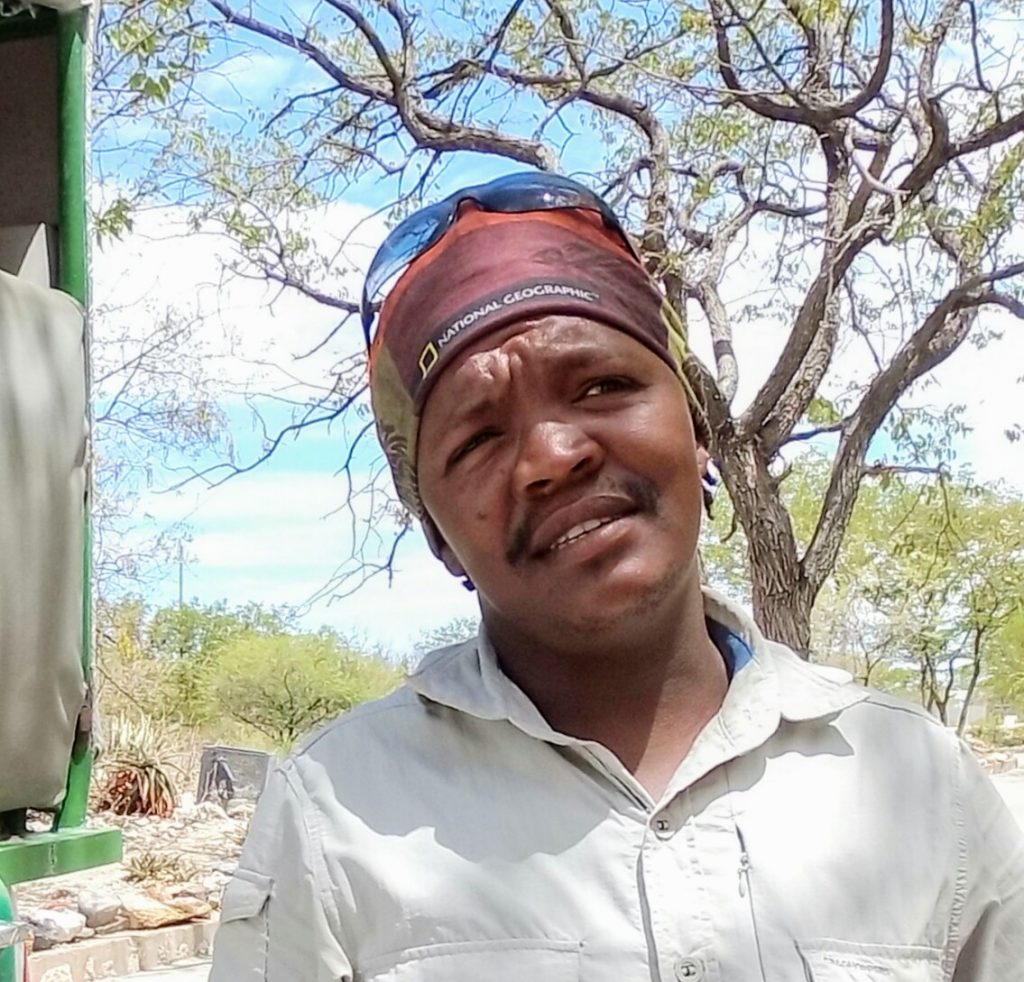
There is a downside of a lot of wildlife, Dirk showed the picture of the world’s most poisonous snake – 3 meter long black mamba, he had shot on the farm a day before and a zebra snake shot earlier in the day.
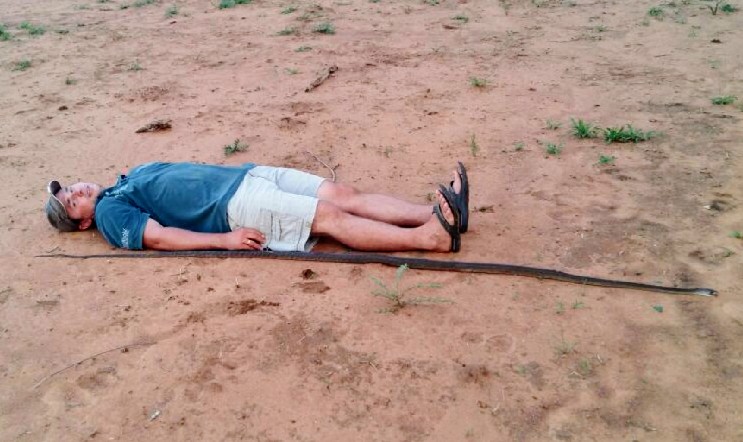
A few days later we end up in a stand-off with Juka over a high-potential campsite in a romantic dry riverbed, which unfortunately was littered with elephant poopie.
We stay in the riverbed, but Juka doesn’t get much sleep. The elephants can be aggressive and locals frequently get killed by elephants they meet at night. In the morning I wake up to an English conversation Juka is holding with someone. It’s a young local dude called Menu from the neighbouring house. We went to ask last night if he minds us camping on the other side of the hills and he didn’t mind. Today he came to check if had any problems with the snakes, because he forgot to warn us last night. Lucky he didn’t, otherwise there wouldn’t have been any sleep for either of us.
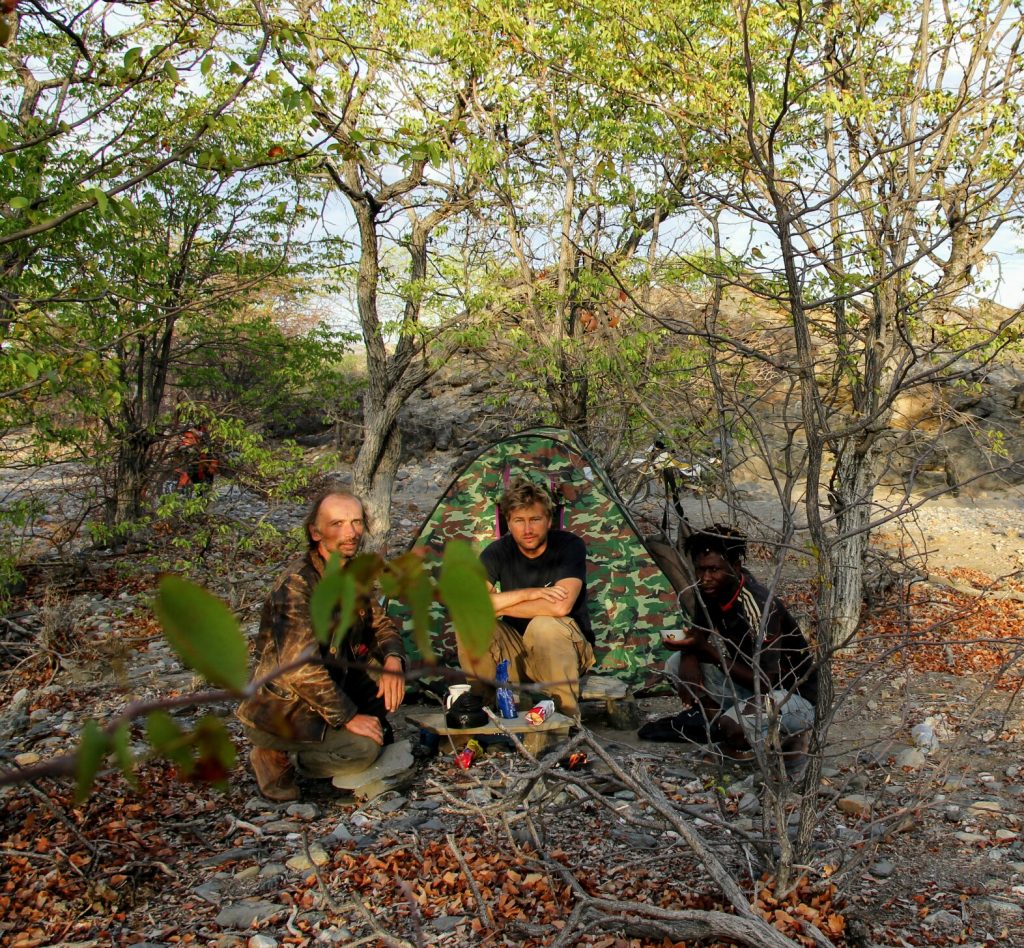
Namibia is pretty much all desert. The coast is the most desert, a north-south mountain range in between and the east is desert again. The northern desert coast, dubbed Skeleton Coast was notorious during the early pre-steam seafaring times. There is a surf wave that takes you to the shore, but so strong that a human powered boat cannot get back to the sea. Once you’re on the beach, you are stuck – impossible to get back to the sea and 200 miles of desert to the nearest inland water source.
The sweaty tropical sauna of the north has changed to stingy burning desert heat during the day with pleasant evenings and mornings. It was here on the 20 degrees southern latitude, where we first experienced sun in it’s exact zenith. Given the heat during the day, it was unimaginable how freezing it got later that afternoon as we crossed the desert to the coast. The freezing wind was blowing 20kts nonstop from the sea with heavy cloud cover hiding the sun.
This night our campsite wins the most functional award. There is nothing on the coast for miles and miles, until we find a campsite which had been closed for the season. The campsite is useless, but it had a wind-sheltered bar. We set up camp inside the bar.
The only other cars we meet on the road are white 4×4 trucks, which always come with a bunch of fishing rods attached to the front grille. Clearly there is something going on for them, so we’re gonna check it out. The first village we ask around and find a tackle shop, which rents us a rod, we pay €1 for one month fishing permit, tie the rod to the back grille of Kotilda and go fishing. In the shop they ask if we know what we’re doing. We say most certainly, referring to Juka’s extensive CV of pulling roach from the river behind his house. Sheepishly I inquire, how far we’d have to throw into the ocean – she says as far as you can 90m or more, under 60m you shouldn’t even bother. It’s not easy at all, but with novice luck I pull a cod and two catfish in a couple of hours left before dark – we’re sorted for dinner.
Only one thing left to do at the end of this stage – find a parking space for the bikes for the next 11+ months. The local KTM shop in Windhoek is happy to help, for €70 per month. This didn’t compare well with our last free garage in Gabon.
So I take on a bit of research and find there is a whole industry of folks storing their 4×4 in Namibia as a holiday vehicle. Soon I have an offer from the Ondakaremba farm for €16 per month only 7km from the airport.
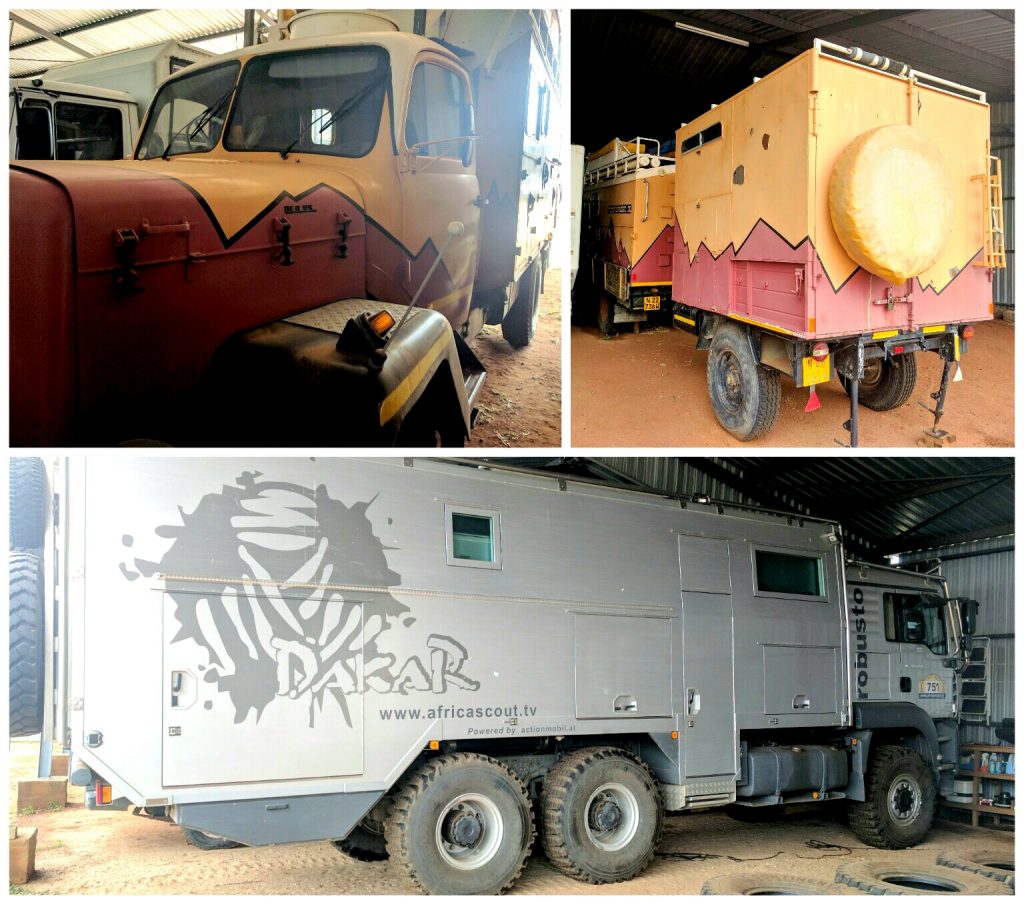
Here among the field of Landcruisers and some monster desert vehicles is this temporary resting base for the girls until we return for the next and final stage.
